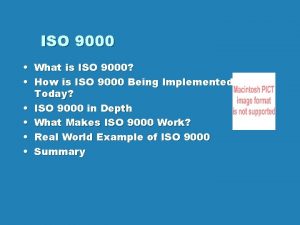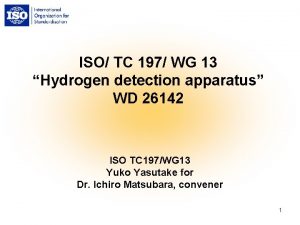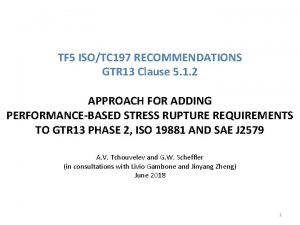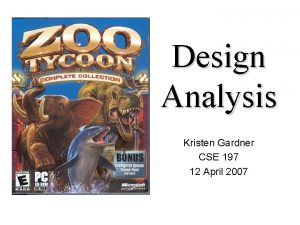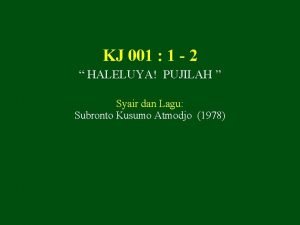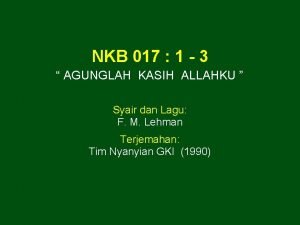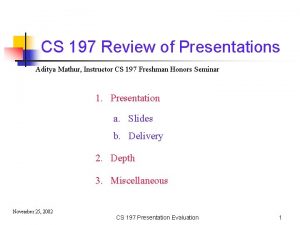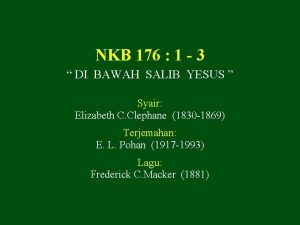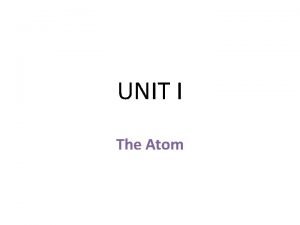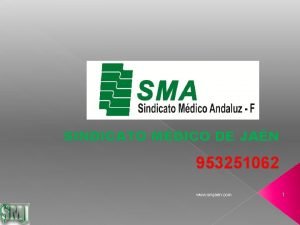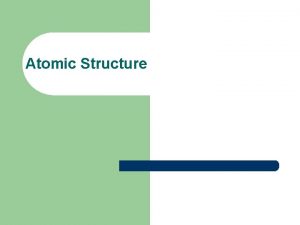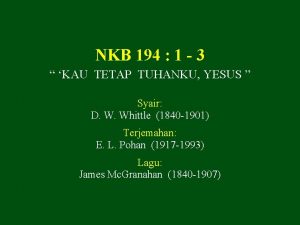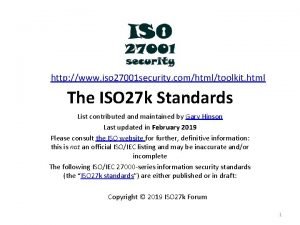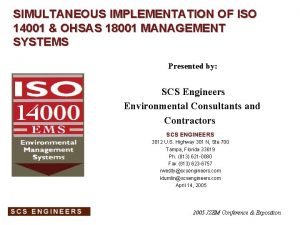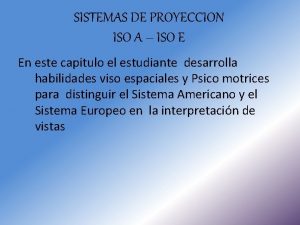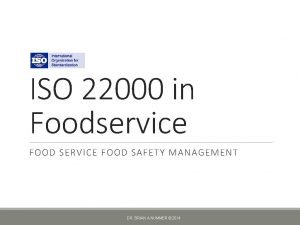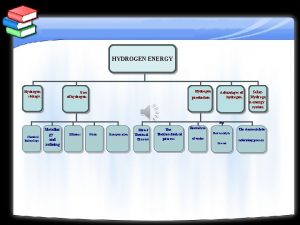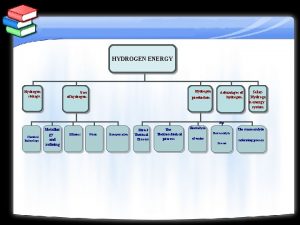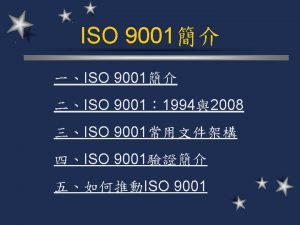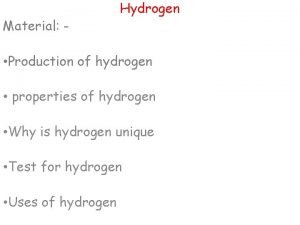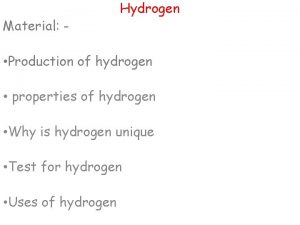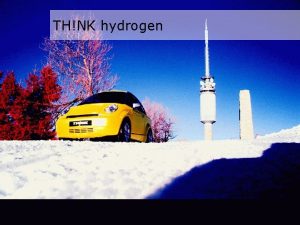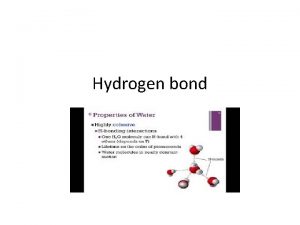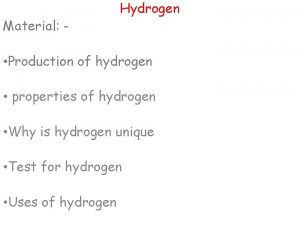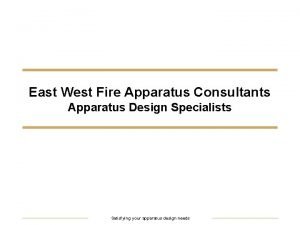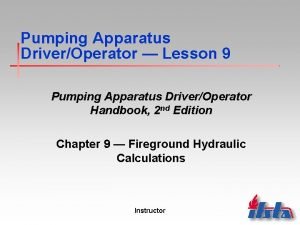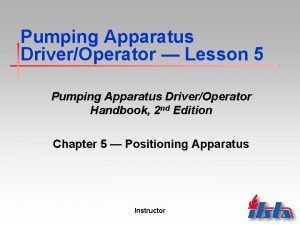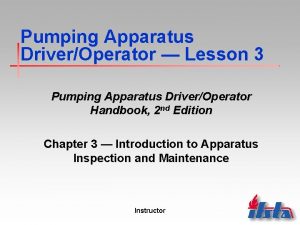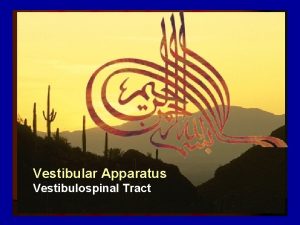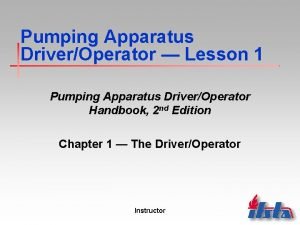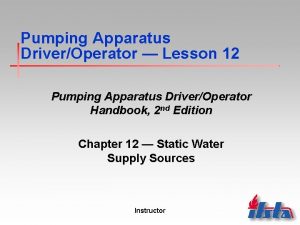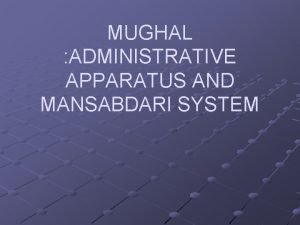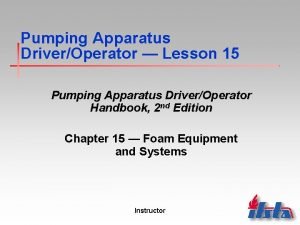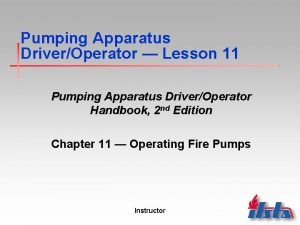ISO TC 197 WG 13 Hydrogen detection apparatus




















- Slides: 20

ISO/ TC 197/ WG 13 “Hydrogen detection apparatus” WD 26142 ISO TC 197/WG 13 Yuko Yasutake for Dr. Ichiro Matsubara, convener 1

Outline ◆ Background ◆ NWIP ◆ Scope ◆ Issues ◆ Future plan 2

Hydrogen detection apparatus Hydrogen stations in Japan 11 locations as of June 2004 ¿Safety: detect hydrogen leaks at hydrogen facilities ¿Essential component of the hydrogen economy 3

Detectors in use 4

Feature: multi-level safety system Performance requirements ・High sensitivity ・Broad detection range ・Quick response ・Long-term stability JHFC H 2 Refueling Station Hydrogen concentration from http: //www. whec 15. jp/ Safety operation 4%v/v, LEL (Lower Explosive Limit) 1%v/v 5000 ppm 500 ppm ・ Station-wide shutdown ・ Shutdown of hydrogen fuel ・ Forced ventilation ・ Nitrogen purge 5

Related standards: flammable gas detection IEC 61779 -1~ 6: (1998) Electrical apparatus for the detection and measurement of flammable gases - Part 1~6 UL ANSI / UL 2075 (2004) Standard for Gas and Vapor Detectors and Sensors CSA C 22. 2. No. 152 -M (1984) Combustible Gas Detection Instruments JIS M 7626 -(1994) Stationary combustible gas alarms JIS M 7653 -(1996) Portable combustible gas detectors No standards specific to hydrogen 6

IEC 61779 Parameters required for multi-level safety mechanism IEC 61779 Accuracy ○ Response speed ○ Stability ○ Detection range X Selectivity x Poisoning x Test methods △ Not included in IEC 61779 Not adequate for multilevel safety systems Need for a new standard specific to hydrogen detection 7

New Work Item Proposal NWIP submitted on May 09, 2005 Approved For: Argentina, Austria, Korea, Denmark, France, Italy, Holland, Norway, Spain Against: Canada, Germany Abstained:Sweden, Switzerland, the U. S. WG 13 formed on September 08, 2005 8

WG 13 ◆ Convener and secretary: Japan ◆ Experts Original: Japan, France, U. S. A. , Norway, Korea, Argentina, Holland Feb. 2007:Japan, France, U. S. A. Norway, Korea, Argentina, Holland, Spain, Germany, Italy, Canada (26 in total) ◆ Liaison IEC/TC 31, Joint Research Center (EU) 9

WG 13 at present ◆Meetings: 1. Tokyo on January 23 and 24, 2006 2. Paris on June 07, 2006 3. Vancouver, B. C. on October 31 and Nov. 1, 2006 CD was circulated on February 08, 2007 with the deadline for comments on May 08, 2007 10

Scope This international standard defines the performance requirements and test methods of stationary hydrogen detection apparatus that is designed to measure and monitor hydrogen concentrations. The provisions in this standard cover the hydrogen detection apparatus used to achieve the single and/or multi-level safety operations such as nitrogen purging or ventilation and/or system shut-off corresponding to the hydrogen concentration. The requirements applicable to the control system as well as the installation requirements of such apparatus are excluded. This standard sets out only the requirements applicable to a product standard of a hydrogen detection apparatus, such as precision, response time, stability, measuring range, selectivity, and poisoning. This standard can be used for the quality assessment or certification of the detection apparatus and establishes the provisions for type test. 11

Relationship with IEC TC 31 ◆IEC TC 31: Hydrogen is one of flammable gases, and, as such, hydrogen detectors should be covered by IEC TC 31. ◆ISO TC 197 WG 13: IEC 60079, a document covering different flammable gases, lacks in the criteria for detection range, selectivity, and poisoning resistance in its current format. A new standard for hydrogen-specific requirements is needed. ◆ISO TC 197 Liaison with IEC TC 31 12

Major features of WG 13 draft Parameter IEC 61779 ISO WD 26147 Precision ○ ○ Response speed ○ ○ Stability ○ ○ Detection range x ○ Selectivity x ○ Poisoning x ○ Test methods △ ○ 13

Detection Range Detected concentration Hydrogen concentration 4%v/v, LEL (lower Explosive Limit) 1%v/v 5000 ppm 500 ppm Requirement Safety operation ・ Station shutdown ・ Hydrogen shutdown ・ Forced ventilation ・ Nitrogen purge Wide detection range ppm~% 14

Poisoning Chemicals Target H 2 “poisons” Harmful chemicals • Organic silicone • Hydrogen sulfide, Ammonia • Ethanol, etc. Sensor device Interaction • Adsorption • Chemical reaction Sensor degradation “poisoning” Poisoning test needed 15

Selectivity Application Hydrogen stations and related facilities Gases in the atmosphere • From exhaust (CO, NOx, SOx) • From fuel (n-butane, i-butane) Selective detection required Selectivity to be provided 16

Test Method IEC 61779 ISO WD 26147 ✔ Chamber-type ✔ Simple methods ✔ Simple procedures Example of proposed chamber 17

Outstanding Issues • Application (specific to fuel stations or broader? ) single vs. multi-level • Detection range (based on the current market vs. based on the anticipated needs) • Consistency with IEC TC 31 or more hydrogen specific requirements 18

From here…. ◆Comments for CD: May 08, 2007 ◆Next meeting: June 6 to 9, 2007 Seoul, Korea (with WG 12) ◆Target dates: DIS: August 2007 FDIS: August 2008 IS: February 2009 19

Thank you! Your opinion is important to our CD! Please contact your national committee for comments. Contact info: Convener: Dr. Ichiro Matsubara: matsubara-I@aist. go. jp Secretary: Yuko Yasutake: yuko@aejapan. com 20
